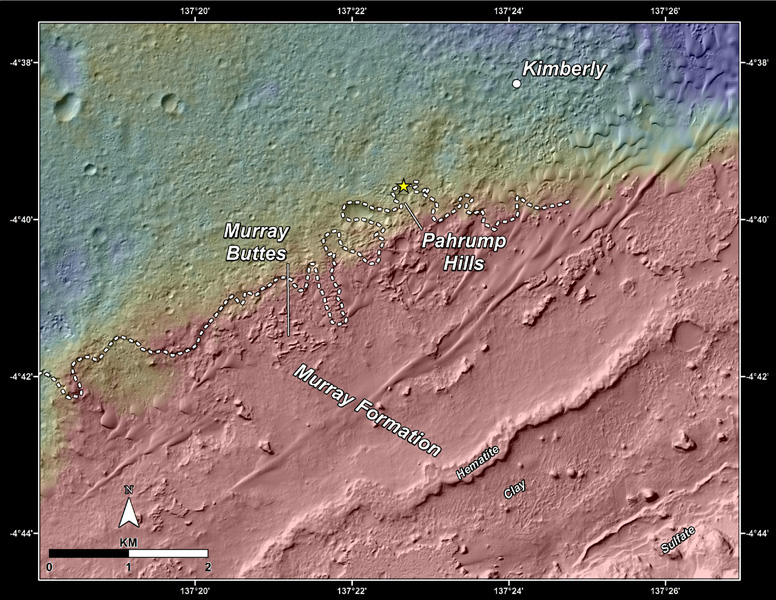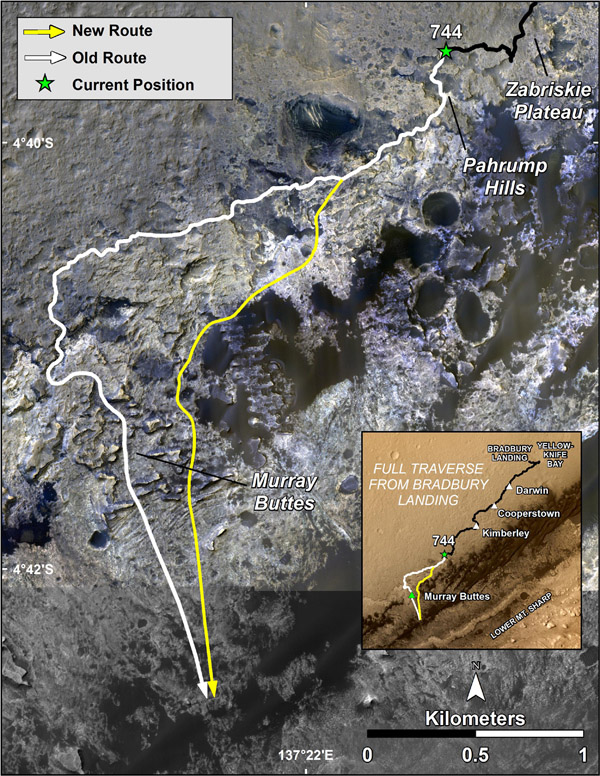Hooray! After 2 long years of seemingly perpetual driving (the wheels' state are a testament to that), Curiosity
has finally arrived at the base of Mount Sharp.
According to the newest press release from NASA JPL:
Curiosity's trek up the mountain will begin with an examination of the mountain's lower slopes. The rover is starting this process at an entry point near an outcrop called Pahrump Hills, rather than continuing on to the previously-planned, further entry point known as Murray Buttes. Both entry points lay along a boundary where the southern base layer of the mountain meets crater-floor deposits washed down from the crater's northern rim.
Here are two maps to give you some context; the first is a topographical map showing the nature of the terrain and the contact marked with a dashed line representing two different geological regions. The second is a false colour image from the Mars Reconnaissance Orbiter showing the old and newly planned routes as well as the contact between the Murray formation of rocks (named after the nearby buttes) which are lighter toned and the darker coloured plains. You may also notice in the first map that the Murray formation has scarcely any craters and looks smoother compared to the older plains. We are definitely not in Kansas anymore!
The rover has already had a go at the Murray rock formation:
Curiosity made its first close-up study last month of two Murray formation outcrops, both revealing notable differences from the terrain explored by Curiosity during the past year. The first outcrop, called Bonanza King, proved too unstable for drilling, but was examined by the rover's instruments and determined to have high silicon content. A second outcrop, examined with the rover's telephoto Mast Camera, revealed a fine-grained, platy surface laced with sulfate-filled veins.
And lets not forget the view, which is just spectacular! Buttes and layers as far as the rover can see.
 |
| A view of the "Amargosa valley" which runs through "Pahrump Hills" seen above the scale (NASA/JPL) |
Hopefully the mission will now deliver the much wanted science which will definitely help its standing amongst senior scientists who recently labelled it last in a review of NASA planetary missions. You can read all about that
here.





